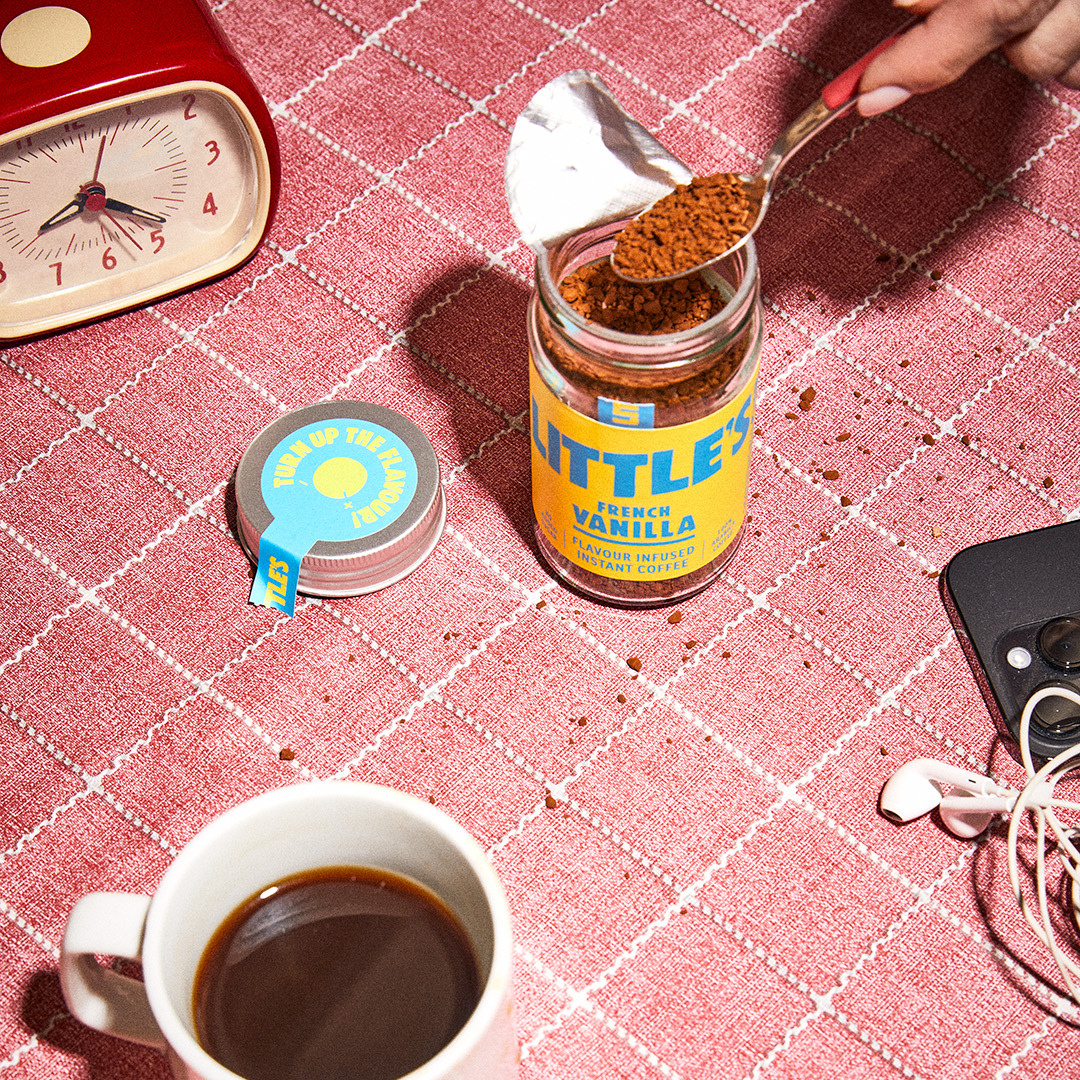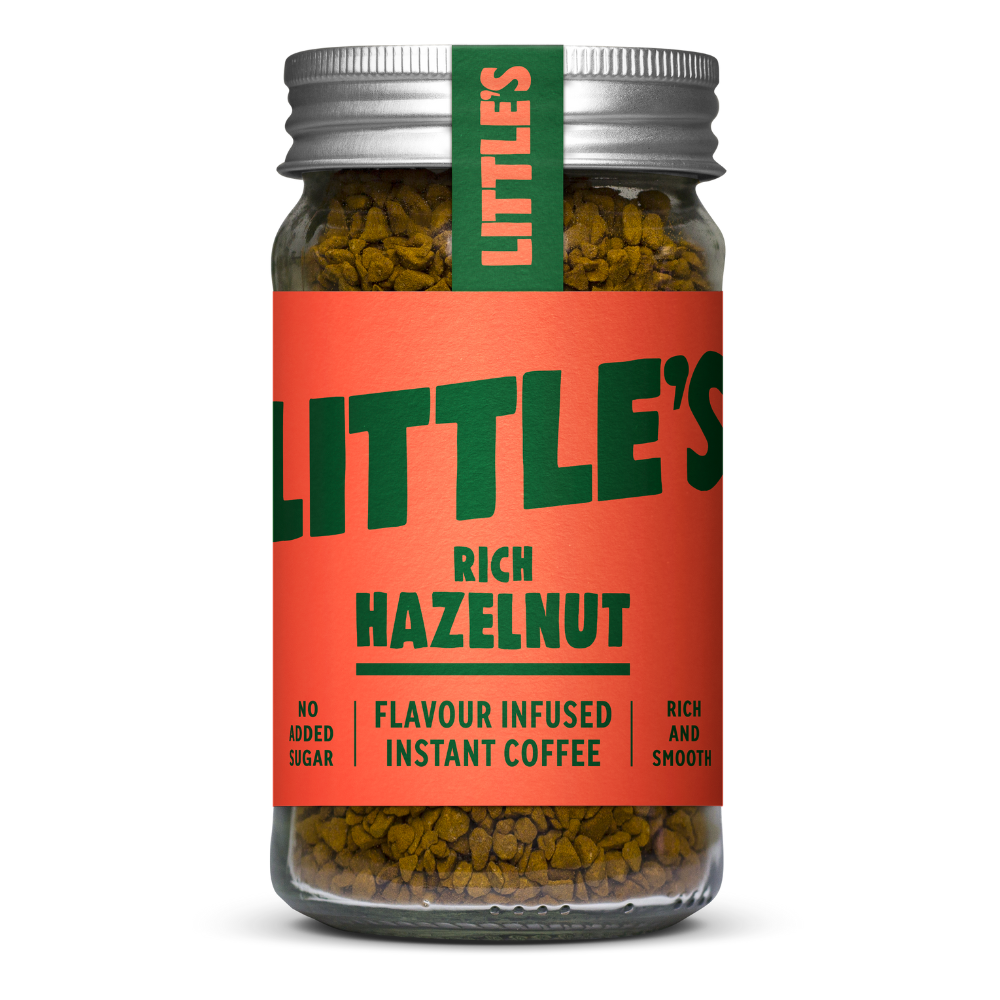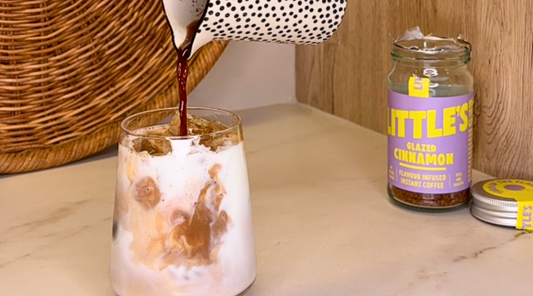
Instant coffee – the (surprisingly) carbon-friendly option
Believe it or not but instant coffee has the smallest carbon footprint of all the coffee we consume, making a jar of Little’s a pretty sustainable choice to have in your kitchen cupboard. Winner.
HOW IS IT WORKED OUT?
To figure out a product’s overall environmental impact, researchers use a method called a life cycle assessment or LCA. Several LCAs have been conducted on instant coffee, compared to other brewing methods, and all have similar findings. Firstly, they found that cow’s milk is kind of a make-or-break factor in any coffee’s carbon footprint. If you want to keep your footprint low, avoid dairy. Due to their milk content, lattes are responsible for more than four times the carbon emissions as black instant. Eek. One scientific study suggests the greenhouse gas emissions used in the production of plant-based milks are lower than for dairy. So if you’re craving a latte, opt for oat milk? The second thing the LCAs found is that, out of all the ways we drink coffee, traditional instant has the smallest carbon footprint. Just don’t overfill the kettle.
TELL ME MORE
There are several reasons that instant coffee has been found to have the lowest carbon footprint of all the coffee brewing methods. Firstly, because of the volumes that instant coffee is produced in. Because instant coffee is generally produced in high volumes, there’s no need to repeat processes over and over again and lots of coffee can be shipped at once. Economy of scale.
The second reason is that the yield you get from instant coffee is so much higher than any other brew method. If you think about it, when you make an espresso, two thirds goes in the bin once the coffee has been brewed, which is the opposite with a cup of instant. With instant, all the coffee gets dissolved in your cup and there’s less waste product. That’s why you only need a spoonful of instant to make the perfect cup of coffee.
It takes around 3kg of coffee beans to get 1kg of instant coffee. Instant has a 25-30% yield, compared to around 10% for espresso. Most other methods – such as cafetière or filter coffee – have between a 1-2% yield.
FROM THE JAR
It’s important to look at how coffee has been prepared. But you may not realise that how you make your coffee at home can add 50% or more to its overall environmental footprint. Boiling the kettle uses more carbon than the whole instant coffee-making process alone. Shocker!
If you want to take a sustainable approach to your coffee drinking, our advice is to be mindful of how much water you’re using and try to only boil the amount you need for your cup. Ultimately, choose the coffee that brings you the most happiness and prepare it in a way that minimises its environmental impact. Love an espresso or a cafetiere? Why not try reusing your grounds in compost or for skincare or crafting. We saw this awesome way of reinventing vases that we’re desperate to try… Let us know if you give it a whirl.
References:
https://ora.ox.ac.uk/objects/uuid:b0b53649-5e93-4415-bf07-6b0b1227172f
https://www.sciencedirect.com/science/article/abs/pii/S0959652609001474















